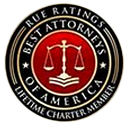The consequences of car crashes can last a lifetime. When your face bears the brunt of impact, the physical and emotional trauma extends far beyond what meets the eye. Face injuries from car accidents affect not just your appearance but your ability to eat, speak, and express emotions naturally.
At Gibbons & Crichton, our Philadelphia car accident attorneys know how devastating these injuries can be for victims and their families. The path to recovery often involves multiple surgeries, ongoing therapy, and significant time away from work.
While no amount of money can undo the trauma, proper compensation helps ensure you receive the care you need and deserve.
The Reality of Facial Trauma in Vehicle Collisions
Car accident face injuries occur more frequently than many people realize. The face contains delicate structures that are particularly vulnerable during sudden impacts. When airbags deploy, steering wheels strike faces, or windows shatter, the results can be catastrophic.
Modern vehicles have safety features designed to protect occupants, but facial injuries occur regularly. The force of collision can cause damage even when seatbelts and airbags function properly. Side-impact crashes pose especially high risks for facial trauma since the head often moves toward the point of impact.
Emergency responders frequently encounter victims with multiple facial wounds at accident scenes. Face injuries from a car accident can range from minor cuts requiring stitches to complex fractures demanding immediate surgical intervention. The severity often depends on impact angle, speed, and whether occupants were properly restrained.
Common Types of Facial Injuries in Auto Accidents
Vehicle collisions produce various types of facial trauma, each presenting unique challenges for treatment and recovery. Soft tissue injuries affect skin, muscles, and nerves throughout the face.
These wounds may appear minor initially, but can lead to permanent scarring or nerve damage.
Fractures commonly occur in facial bones due to their relatively thin structure. The nose breaks most easily, followed by the cheekbones and jaw bones. Eye socket fractures can affect vision permanently if not treated promptly and properly.
Dental injuries happen when the face strikes steering wheels, dashboards, or other hard surfaces.
Teeth may be knocked out, cracked, or driven into surrounding tissue. Jaw injuries can make eating and speaking extremely difficult for extended periods.
The specific types of facial trauma victims experience include:
- Lacerations and puncture wounds from glass or metal fragments
- Bruising and swelling that can last for weeks
- Burns from deployed airbags or fires following crashes
- Nerve damage causing numbness or paralysis in facial muscles
Burns deserve special attention since they can result from airbag deployment or vehicle fires. Chemical burns from airbag powder affect some victims, while thermal burns occur when fires ignite after crashes. These injuries often require specialized treatment at burn centers.
Long-Term Consequences and Scarring
Facial scars from a car accident create lasting reminders of traumatic experiences. Even with excellent medical care, scars often remain visible for life. The location and severity of initial injuries determine how noticeable scarring becomes over time.
Scar tissue forms differently on various parts of the face. Areas with more movement, like around the mouth, tend to develop more prominent scarring. The healing process can take months or years, with final results not apparent until well after the accident.
Psychological impacts of facial scarring extend beyond physical appearance. Many victims experience depression, anxiety, and social withdrawal following disfiguring injuries. Some people avoid mirrors, social gatherings, or returning to work due to self-consciousness about their changed appearance.
Treatment options for facial scarring continue to improve, but results vary significantly between individuals. Plastic surgery, laser treatments, and injectable fillers can reduce scar visibility in some cases. However, these procedures are expensive and may require multiple sessions over several years.
The emotional toll of permanent facial changes affects entire families. Spouses and children often struggle to adjust to their loved one’s altered appearance. Professional counseling becomes necessary for many families dealing with these challenges.
Medical Treatment and Associated Costs
Emergency treatment for car accident face injuries begins at the crash scene and continues through hospital stays, surgeries, and rehabilitation. Initial care focuses on stopping bleeding, stabilizing fractures, and preventing infection in open wounds.
Surgical repair of facial injuries requires specialized skills from plastic surgeons, oral surgeons, and other specialists. Multiple procedures are often necessary to achieve optimal results. Each surgery carries risks and requires additional recovery time.
Hospital bills for facial trauma treatment can reach hundreds of thousands of dollars. Surgical fees, anesthesia costs, and facility charges add up quickly when multiple procedures are needed. Prescription medications for pain management and infection prevention create additional expenses.
Ongoing care costs include:
- Physical therapy to restore facial muscle function
- Speech therapy for victims with jaw or mouth injuries
- Psychological counseling to address emotional trauma
- Follow-up appointments with multiple specialists
Rehabilitation can continue for years after the initial accident. Some victims require periodic revision surgeries to maintain function or improve appearance. The total cost of treatment often exceeds initial estimates significantly.
Compensation for Facial Injury Victims
Legal compensation for facial injuries covers both economic and non-economic damages. Economic damages include all measurable financial losses, such as medical bills, lost wages, and future treatment costs. These amounts can be calculated relatively precisely using bills and employment records.
Non-economic damages address pain, suffering, and reduced quality of life resulting from facial injuries. Permanent scarring and disfigurement often justify substantial awards in this category.
Juries understand that facial changes affect victims profoundly throughout their lives.
Future medical costs must be carefully estimated when facial injuries require ongoing treatment.
Expert medical testimony helps establish what procedures will be needed and their likely costs.
This projection includes both routine follow-up care and potential complications requiring additional treatment.
Lost earning capacity becomes relevant when facial scarring affects employment prospects. People in customer-facing roles may find career advancement more difficult following disfiguring injuries. Vocational experts can quantify these losses for legal purposes.
Working With Experienced Legal Representation
Insurance companies often minimize facial injury claims, arguing that scarring is purely cosmetic and does not warrant significant compensation. This approach ignores the profound impact these injuries have on victims’ daily lives and prospects.
Gibbons & Crichton works with medical experts who can document the full extent of facial trauma and its consequences. Our experienced Philadelphia car accident lawyers understand how to present these cases effectively to insurance adjusters and juries. Our experience with facial injury cases helps us secure appropriate compensation for our clients. Call us today to talk to our legal experts.














